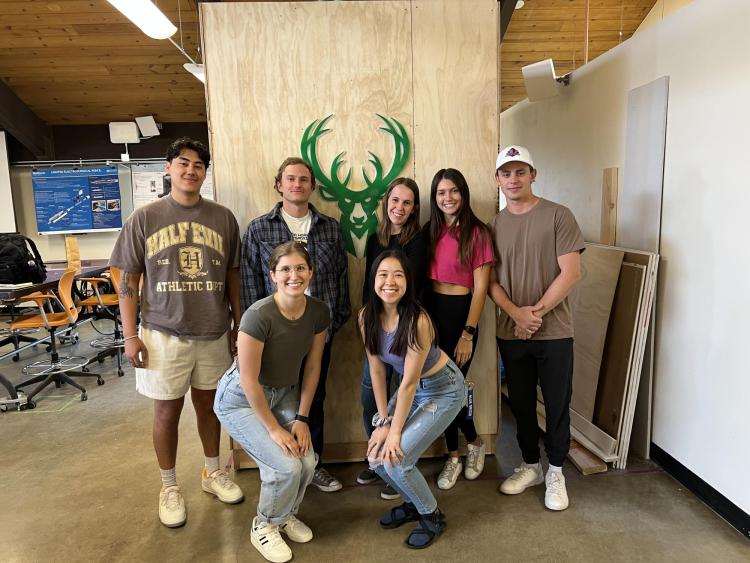NBA team sponsors student project to help athletes rest between games
As sports programs continue to look for ways to maximize the performance of their athletes, there is a growing need to create the ideal settings for rest and recovery in the industry’s training facilities.
A group of mechanical engineering seniors at the University of Colorado Boulder have helped meet that need by designing a sleep cabin prototype, where athletes can relax and recover in optimal conditions between games.
The Milwaukee Bucks are sponsoring the project. The team of students from the Paul M. Rady Department of Mechanical Engineering designed and built the prototype for their capstone senior design project.
“Most people achieve the highest quality of sleep when the room is dark, quiet and cold,” project manager Brooklyn Garrido said. “But the challenge is to create an environment that optimizes those conditions, while providing customizability for other variables that depend on personal preference.”
In addition to doing their own research and testing on the best practices behind sleep optimization, the team hired Dr. Ellen Stothard, research and development director of the Colorado Sleep Institute, as a consultant. Together, they decided to focus on four main conditions that prove to be crucial for rest and recovery: temperature, air quality, sound and light.

The team also brought on CU architecture student Aidon Salvay for structural and spatial consultation. “Initially, we were planning to build sleep pods, with a hatch door you open and climb into,” Salvay said. “But the athletes who will use this range from 6’6” to 7’2” tall. It just made more sense to build cabin-like structures.”
The outside of the sleep cabin prototype measures 9.5x10x11 feet.
To develop a design that utilizes best practices for constructing a soundproof room, the team consulted with specialist Ted Weidman from Acoustical Surfaces, while also conducting extensive research and tests of their own.
They settled on a floor design that includes joist isolators for vibration isolation, double-layered subfloor and fiberglass insulation.
For the walls, a staggered stud formation and one layer of exterior drywall allow for uninterrupted insulation throughout the length of a wall. They added two layers of interior drywall with a layer of green glue, a noise dampening compound, between them.
The ceiling design of the cabin is a mix between the walls and floor. For example, the ceiling has joists much like the floor, double-layered interior drywall like the walls, insulation between the joists like the floor and an additional layer of drywall on the exterior.
“The other conditions like temperature, air quality and light are as carefully researched, tested and optimized,” Garrido said.
Each sleep cabin will have its own HVAC system installed for temperature optimization, along with a state-of-the-art air purifier to regulate air quality. The team chose Philips Hue Light Strips that can be set to emit zero blue light, which hinders sleep and production of melatonin. They installed them on the walls facing up to create ambient lighting and avoid glare.
Watch a video render of the sleep cabin prototype here:
[video:https://www.youtube.com/watch?v=x7eUJlMCOV4]
The biggest investment was the bed. The team chose a Zerobody Pro XL, which is a dry float bed that serves the dual purpose of being highly effective for sleep and muscle recovery.
Another key aspect of the project was the monitoring of the conditions and the user interface installed in the sleep cabin.
“We have four sensors in the sleep cabin that constantly monitor the conditions and communicate wirelessly to a Google Home Assistant,” said systems and test engineer Zoe Zier. “The athletes can then customize certain conditions like light or temperature to their personal preferences.”
The team said it was very exciting to work on a project that helps close the gap between top athletic performance and engineering.

